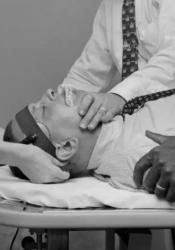Los Angeles, California
In October of 1970, the researcher M.P. Feldman was giving a film presentation on his work with queer aversion therapy. Part of the way through this film, protestors from the Gay Liberation Front gathered in the conference hall. They forced their way onto stage, took over the microphone, and demanded to hold a meeting with the presenting researchers. After a long stand-off that included police presence, a meeting was agreed on, so that the Gay Liberation Front could have a chance to voice their grievances with cruel aversion therapy. This demonstration was a turning point in the equality of queer Americans. The conversation about the proper treatment of queer patients was opened, and eventually led to homosexuality being removed from the American Psychiatric Association's list of mental disorders. Once this distinction was gone, conversion of all forms rapidly lost popularity, and aversion therapy saw many changes in its practice. In addition, the news coverage of the protest drew national attention to the immorality of involuntary aversion therapy.
Source: Marston, A. R. “Reflections After a Confrontation with the Gay Liberation Front.” Professional Psychology, vol. 5, no. 4, 1974, pp. 380–384. https://doi.org/10.1037/h0021325
Parent Map
Coordinates
Longitude: -118.243652209640

